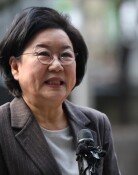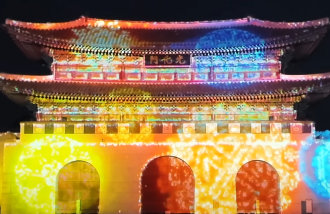The meaning of animals in national heritage
The meaning of animals in national heritage
Posted August. 23, 2021 07:35,
Updated August. 23, 2021 07:35

The great seal Daegunjubo made out of silver is 7.9 centimeters tall and 12.7 centimeters long. A turtle is sticking out its neck on the square body. Its gold-plating has worn off, reflecting some 140 years since it was made in 1882 (19th year of King Gojong). The great and ceremonial seals including Daegunjubo and Hyojongeobo made in 1740 both have a turtle handle. It is to wish a long life of the king through a turtle, one of the 10 symbols of longevity, and prosperity of the royal family through fertility. The Cultural Heritage Administration announced in June that it will designate Daegunjubo, the last great seal of the Joseon dynasty, as the national treasure.
Spring and summer edition “Animal Kingdom,” a monthly magazine for cultural assets, to be published on Wednesday by the Cultural Heritage Administration highlights the meaning of animals in various cultural assets. A haechi welcomes visitors at the entrance of Gwanghwamun, the front gate of Gyeongbokgung. Haechies covered with scales and horned in the head are the incarnation of laws and justice that help kings to decide right from wrong and repel injustice. There are 22 haechies around the Geunjeongjeon hall (national treasure 223) of Gyeongbokgung. They signify the realm of the king and vigilance for servants that go up and down the hall to practice politics based on laws and justice.
There is an animal to prevent fires at Gyeonghoeru (national treasure 224) that represents the Gyeongbokgung palace, which had a series of fire accidents. Gyeonghoeru is an artificial pond made in 1867 (4th year of King Gojong) to prevent fire after Heungseon Daewongun (1820-1898) built the palace. Imaginary animal Bulgasari that has a body of a bear and a nose of an elephant stands at the stone bridge heading to the palace past Jasimun at the north of Gyeonghoeru. The animal known to eat iron, the opposite of fire, is intended to prevent fires.
The animals that signified a high status in the past are sometimes reinterpreted in the present day. For example, dragons symbolized kings and a blue dragon, one of the four gods, was regarded as a protector of the dead. But dragons in the modern world are sometimes depicted as helpless in popular culture. Japanese director Hayao Miyazaki’s (80) animation “Spirited Away” depicts Haku, a white dragon that protects rivers, as an animal under control of witch Yubaba.
“The meaning of animals changes by time, but they have always been used as a symbol,” said Kim Tae-young, the public relations chief at the Cultural Heritage Administration, who directed the magazine. “I hope the audience could feel closer to cultural assets through animals.”
71wook@donga.com







